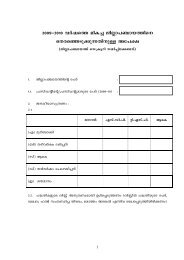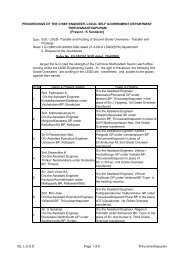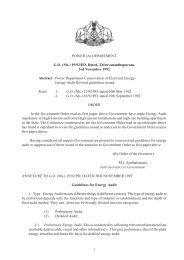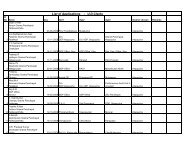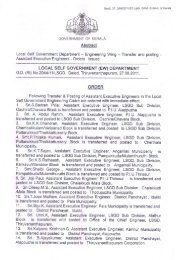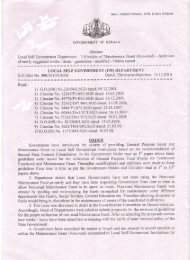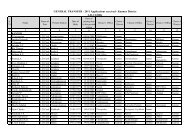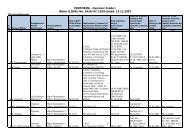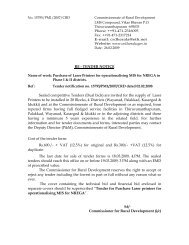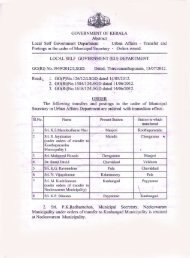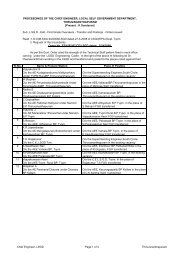Chapter 2 - Kerala Govt Logo
Chapter 2 - Kerala Govt Logo
Chapter 2 - Kerala Govt Logo
- No tags were found...
You also want an ePaper? Increase the reach of your titles
YUMPU automatically turns print PDFs into web optimized ePapers that Google loves.
<strong>Chapter</strong> 2Policy, Legislation and Regulationsupervise the construction activities related to RWS and sanitation sectorssign off on all completed works and community development activitiescommission and eventual takeover of completed water supply and sanitation works througha joint inspection with DWSM, creating hygiene awareness, collection of funds through atariff system for O&M of water supply and sanitation worksmanage and finance O&M services, on a sustainable basisempower women of the villages for O&M and day to day affairs of the schemeinvolve in HRD and IEC activities of other villages after completion of own scheme2.2.3.2. Total Sanitation Campaign“Total Sanitation Campaign (TSC)” emphasizes more on Information, Education andCommunication (IEC), Human Resource Development, Capacity Development activities toincrease awareness among the rural people and generation of demand for sanitary facilities.This will also enhance people‟s capacity to choose appropriate options through alternatedelivery mechanisms as per their economic condition. The programme is being implementedwith focus on community-led and people centered initiatives. Children play an effective role inabsorbing and popularizing new ideas and concepts and this programme intends to tap theirpotential as the most persuasive advocates of good sanitation practices in their ownhouseholds and in schools. The main objectives of the TSC are to:Bring about an improvement in the general quality of life in the rural areas. Accelerate sanitation coverage in rural areas to access to toilets to all by 2012.Motivate communities and Panchayati Raj Institutions promoting sustainable sanitationfacilities through awareness creation and health education. Achieve total sanitation coverage in schools by March 2008 and Anganwadis by March 2009Promote hygiene education and sanitary habits among studentsEncourage cost effective and appropriate technologies for ecologically safe and sustainablesanitationDevelop community managed environmental sanitation systems focusing on solid & liquidwaste managementThe programme has the following components:(a) Start-Up Activities(b) IEC Activities(c) Rural Sanitary Marts and Production Centers(d) Provision of Revolving Fund in the District(e) Construction of Individual Household Latrines(f) Community Sanitary Complex(g) Institutional Toilets for schools & Anganwadi(h) Solid and Liquid Waste Management.The LSGs have a key role in ensuring thatsafety standards are met with allcomponents of TSC e.g. the distancebetween water source and a latrine–adhering to the minimum distance forIHHL, school and AW toilets andcommunity sanitary complexes; regulatingpit-depth, pit lining to prevent pollution,collapse of pit etc. The same will apply tokey hygiene behaviour such as keeping theenvironment around hand pumps /watersources clear and tidy and free of humanand animal excreta. These can be ensuredthrough the proposed ESMFAs per the Constitution 73rd Amendment Act,1992, Sanitation is included in the 11th Schedule. Accordingly, the TSC is being implementedby the LSGs. The Block and District level PRIs are to regularly monitor the implementation.




